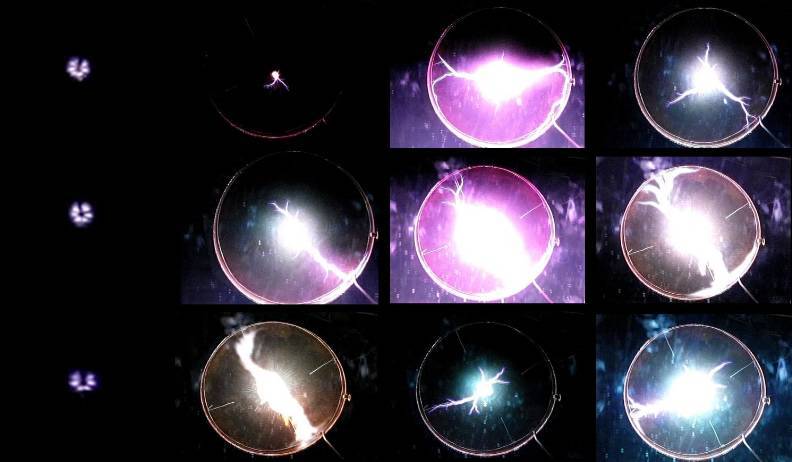Research of Long-Living Plasma Excited in the Open Air
Long-Living Plasma Excited by Electric Discharge in Water
Excitation of long-living plasma in the open air is very interesting phenomena due to its physics and also its possible applications in the tasks of energy conservation and a transmission without losses.
Investigation of the long living plasma formation exciting by electric discharge in water solutions was done on the experimental set-up, which scheme is based on the facility scheme. Our scheme was developed for electrical discharge in water in voltage range from 2 to 7 kV and capacitor bank has 0.5 uF. Long living plasma dynamics in the open air were investigated with the help of high-speed video camera Casio Exilim Pro EX-F1, which is capable for video capturing with 1200 fps.
The experimental setup for long-living plasmoid generation
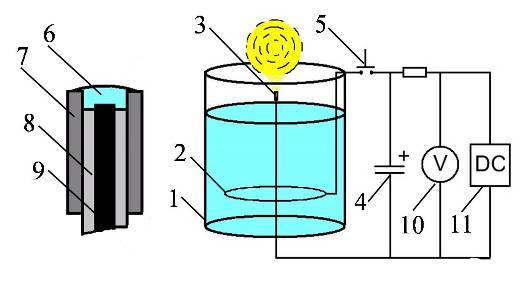
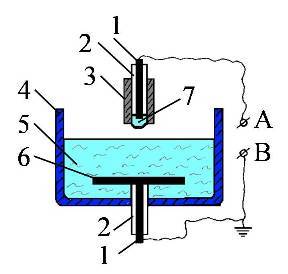
1) polyethylene vessel, 2) circular electrode,3) central electrode, 4) capacitor bank, 5) discharger, 6) water drop, 7) quartz pipe, 8) wire insulation, 9) copper wire, 10) voltmeter, 11) DC voltage supply.
Backward scheme:
1) electrodes, 2) insulator,
3) quartz pipe, 4) capacitor bank, 5) water solution, 6)disk electrode (anode), 7) water drop.
The mechanism of long-living plasma excitation can be considered as follows. In the ini-tial time moment after shorting the circuit, a plasmoid appears at the sharp edge of the central electrode due to the high field intensity. The same process occurs in the crown discharge. After that an arc discharge appears between central electrode and second electrode immersed in the water. During this discharge the electric power accumulated in the capacitor block pumps the plasmoid existing in the vicinity of the central electrode. Due to electric pumping the plasmoid gains a spherical form and rises vertically above the vessel.
Dependences of plasma parameters on electric discharge current pulse (duration and am-plitude) were obtained with the help of Rogovskiy belt. In the case of discharge voltage 3,5 kV the discharge current exponential decay starting from the amplitude value during 20 msec. The amplitude discharge current value depends strong upon water temperature and vary from 200 A to 400 A. In the case of distilled water with small drops of sulfuric acid and electrical resistivity from 5 to 10 kOhms*m the excited plasmoid life time can reach 0,5 sec.
As the result it was detected that electrical discharge in distilled water with high re-sistivity around 100 kOhms*m does not excite the long-living plasmoid. But in the case of distilled water with small quantity of impurities such as elements Fe, Mn, Cu, Na its salts and also Cl and S as the result of electrolysis after mixing of water with acids, we achieve the required conditions for electric discharge with long-living plasma excitation. Tap or natural water also consists of metal salts. As the result of chemical reactions during electrical discharge in such liquids the plasmoid glowing spectra is wide. Thus, impurities affects on the long-living plasmoid color.
Our experiments show that the plasma formation life time equals from 0.15 sec to 0.5 sec and it depends on water temperature. We carried out experiments with water in the temperature range from +1°Ñ to +85°Ñ. In the lowest temperature the plasma formation life time was higher. This fact can be explained as dependence of water resistivity from water temperature. It is well-known fact that water resistivity decay with temperature increase until the strong influence of evaporation.
Also it was detected that the form of water vessel influence on the plasma form. Experiments show that in the case of big ratio of vessel diameter to its height the probability of excitation of plasmoid with ideal spherical form is much higher. In our experiments the great number of excited plasmoids with a form close to spherical one was obtained in the vessel with the ratio around 10. Also it is important to note that both plasma form and life time strongly depends on the number of previous experiments carried out with this water. The maximal life time of the plasma formation was achieved in the water solution during first discharge.
Dependence of Plasma Parameters on Vessel Form
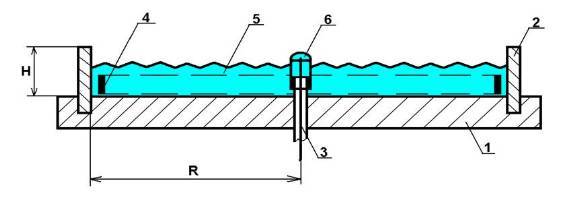
1) Dielectric plate, 2) plastic vessel, 3) central electrode, 4) circular electrode cross-section, 5) circular electrode, 6) water drop.
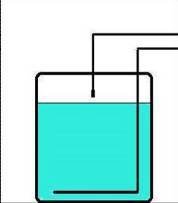
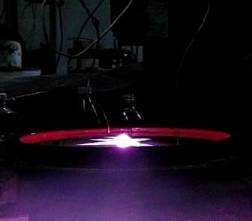
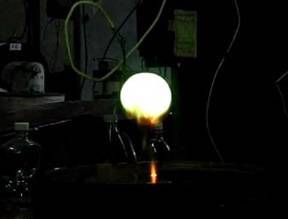
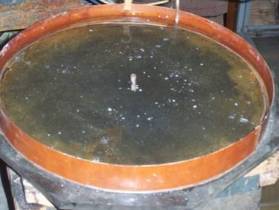
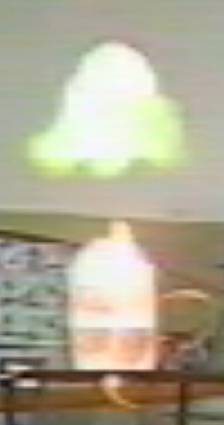
In this fig. it is shown the mode, when several plasmoids were excited during one dis-charge. Also in our experiments we have detected soft X-rays in the form of several pulses in time with the help of scintillating sensor.
Photo of excited long-living plasmoids in the open air
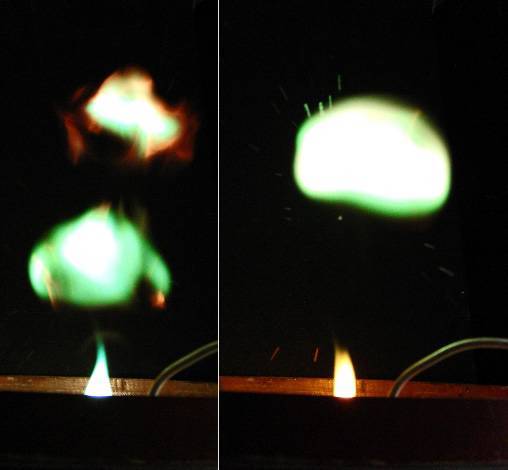
a) several plasmoids mode, b) single plasmoid mode
Dynamics of Spherical Plasmoid Excitation
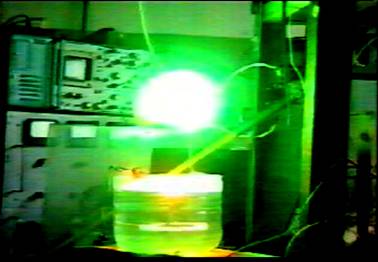
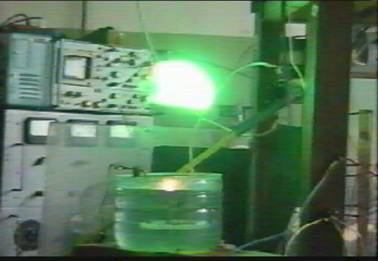
1 2
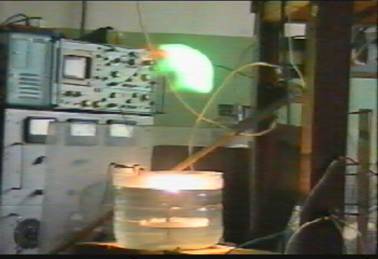
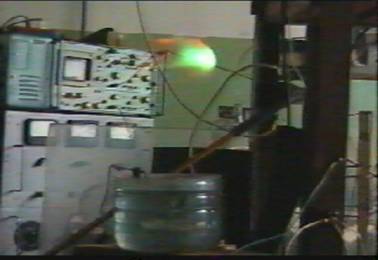
3 4
Streamers Preceded Plasma Excitation
